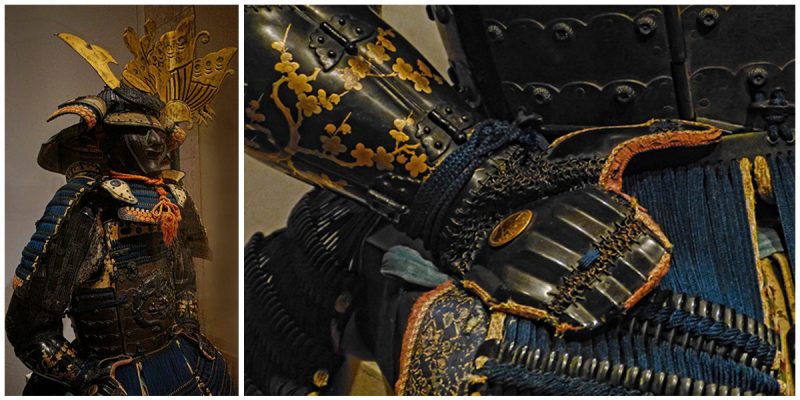The techniques used by Japanese armorers evolved through the centuries. Made for war, armor protected the samurai who wore it, adorning and honoring those who fought and died in combat.
Many materials were required to produce a Japanese armor that was as beautiful as it was functional. Iron, leather, brocade and precious and semi-precious metals were often used.
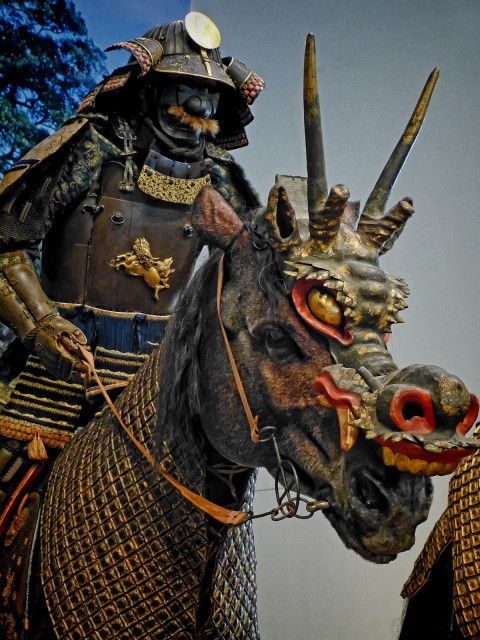
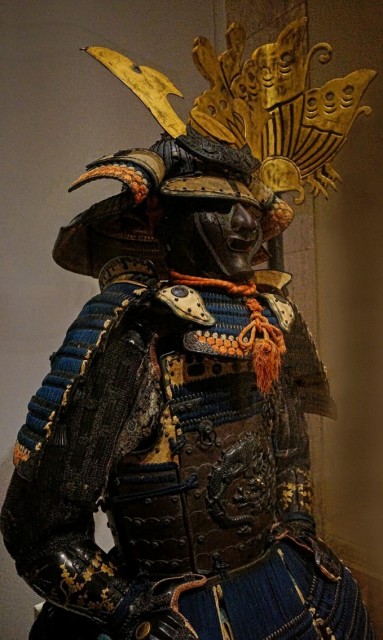
Japanese armour is thought to have evolved from the armour used in ancient China and Korea. Cuirasses and helmets were manufactured in Japan as early as the 4th century. Portland Art Museum/Photos: Mary Harrsch/Flickr
Tankō, worn by foot soldiers and keikō, worn by horsemen were both pre-samurai types of early Japanese cuirass constructed from iron plates connected together by leather thongs.
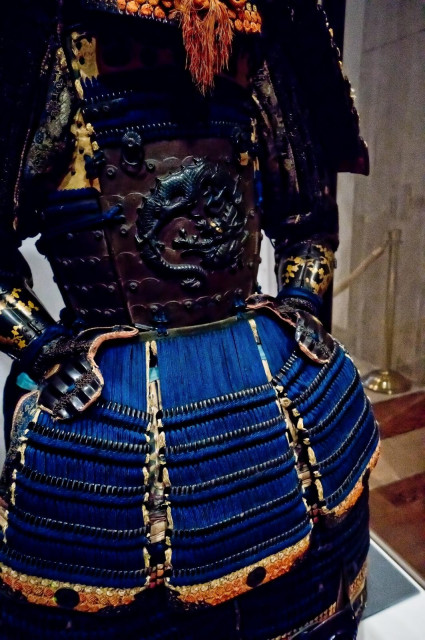
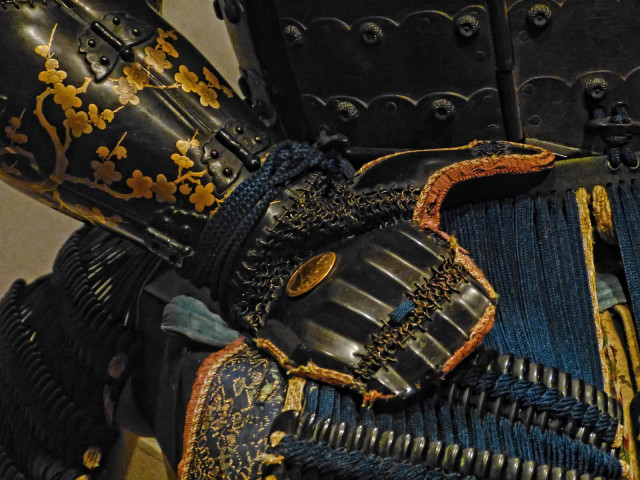
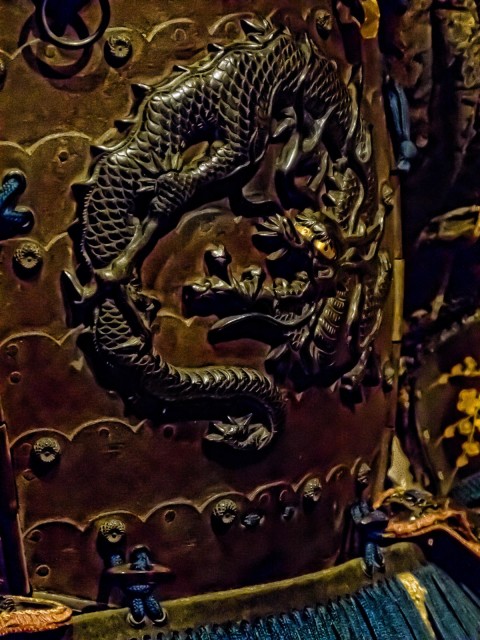
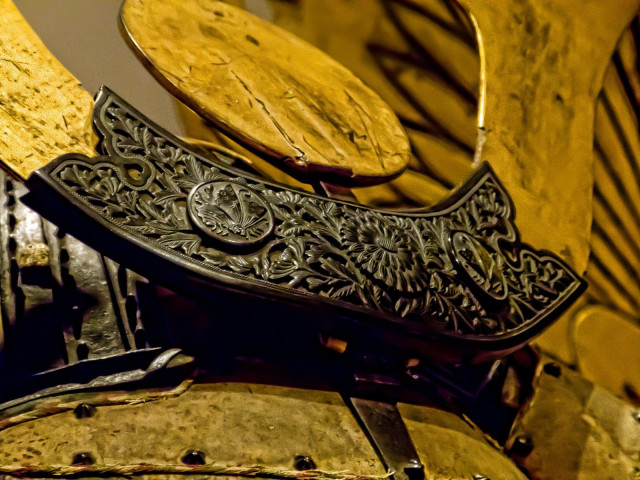
Japanese armour was generally constructed from many small iron (tetsu) and/or leather (nerigawa) scales (kozane) and/or plates (ita-mono), connected to each other by rivets and macrame cords (odoshi) made from leather and/or braided silk, and/or chain armour (kusari).
Noble families had silk cords made in specific patterns and colors of silk thread. Many of these cords, were constructed of well over 100 strands of silk. Making these special silk cords could take many months of steady work, just to complete enough for one suit of armour.
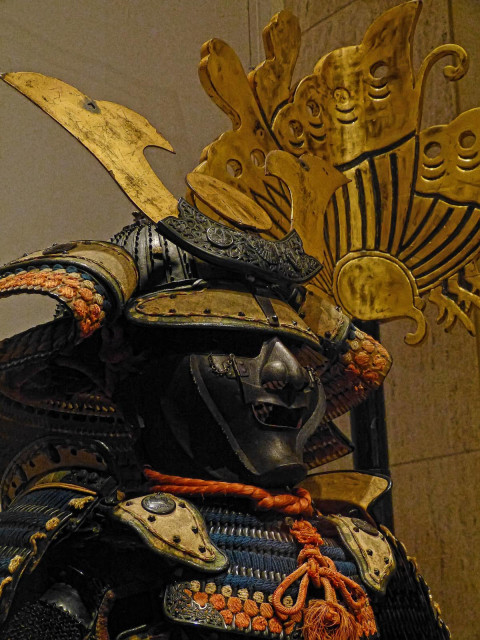
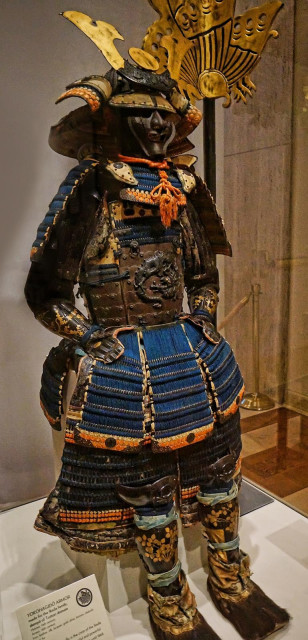
These armor plates were usually attached to a cloth or leather backing. Japanese armour was designed to be as lightweight as possible as the samurai had many tasks including riding a horse and archery in addition to swordsmanship.
The armour was usually brightly lacquered to protect against the harsh Japanese climate. Chain armour (kusari) was also used to construct individual armour pieces and full suits of kusari were even used.
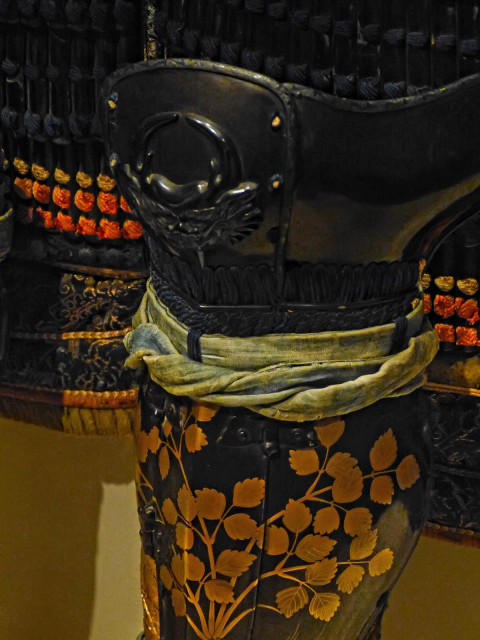
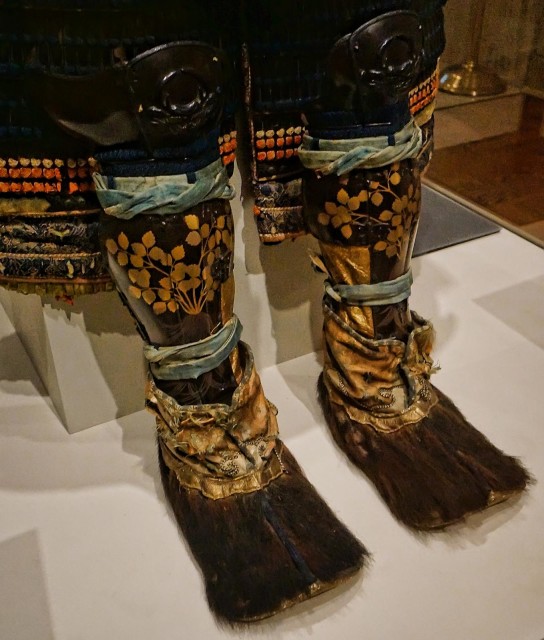
Most samurai armor weighs somewhere between 20 and 45 lbs. Compared to European armor during the Middle Ages, which could weigh on average around 60 lbs., that is incredibly light.
Just as the samurai themselves appreciated these suits of armor, helmets, masks and weapons as fine works of art worthy of display, so too do modern museums and private collectors today.
